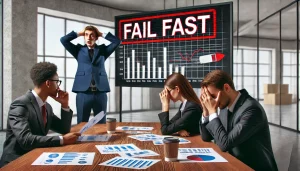
Agile has become the go-to methodology for software development and project management over the past two decades. Its promise of flexibility, rapid delivery, and customer-centric focus has made it the default approach for many organisations. But despite its widespread adoption, many companies are discovering that Agile is not the silver bullet they hoped for. Projects still miss deadlines, costs spiral, and teams experience burnout, even with Agile in place.
The Reality Behind Agile’s Promise
Agile was meant to solve the problems of traditional project management, rigid timelines, slow delivery, and poor responsiveness to change. However, as organisations have scaled Agile or tried to adapt it to complex environments, many are facing diminishing returns. Misunderstanding Agile principles, poor implementation, and unrealistic expectations often lead to frustration rather than success.
Many executives find themselves asking: “If Agile is so effective, why are we still struggling to deliver value?” This disconnect stems from the mistaken belief that Agile alone is enough to fix systemic organisational issues.
Where Agile Falls Short
Agile is not a one-size-fits-all solution. The methodology’s success depends on how well it’s implemented, how aligned the organisation is with its principles, and whether the cultural and structural foundations are in place to support it.
Here’s where Agile often breaks down:
- Lack of Organisational AlignmentAgile thrives in a collaborative environment where business goals, team capabilities, and customer needs are aligned. Many organisations implement Agile within their development teams but fail to align other departments, leading to conflicting priorities and miscommunication.
- Misinterpreting Agile PrinciplesAgile emphasises flexibility and adaptability, but some organisations mistake this for a lack of structure. Without a clear roadmap and strategic direction, Agile projects can drift, causing delays and scope creep.
- Inadequate Stakeholder Buy-InAgile relies on continuous feedback and involvement from stakeholders. If executives and business leaders are not engaged or supportive, teams struggle to secure the resources and input needed for success.
- Over-Reliance on FrameworksFrameworks like Scrum and SAFe are useful, but they’re tools, not solutions. Rigidly following a framework without adapting it to the organisation’s specific needs often leads to inefficiency and frustration.
- Burnout from Continuous DeliveryAgile’s focus on rapid iterations and continuous delivery can lead to burnout if not managed properly. Teams pressured to meet unrealistic sprint goals may sacrifice quality and innovation for speed.
Making Agile Work in Complex Environments
Agile can still be effective, but only when it’s adapted to the organisation’s structure, culture, and strategic goals. Here’s how to make Agile work in complex environments:
- Align Business and Technology GoalsEnsure that Agile teams are working toward business outcomes, not just completing sprints. Establish clear KPIs tied to strategic objectives to measure success.
- Train Leaders and Teams on Agile PrinciplesAgile isn’t just for developers. Educate business leaders and stakeholders on Agile values so they understand the importance of flexibility, feedback, and iterative delivery.
- Balance Flexibility with StructureCreate a strategic roadmap that outlines high-level goals while allowing teams to adjust their execution based on real-time feedback. Structure and flexibility must work hand in hand.
- Encourage Cross-Department CollaborationBreak down silos by involving marketing, sales, finance, and other business units in Agile processes. Shared goals and transparent communication are key to removing friction.
- Manage Workload to Prevent BurnoutSet realistic sprint goals and build recovery periods into the schedule. Protect teams from excessive pressure to maintain productivity and creativity.
Agile Works But Not on Its Own
Agile can drive faster delivery and greater responsiveness, but it’s not a cure-all. Success comes from understanding Agile’s strengths and limitations and adapting it to the unique needs of the organisation. Companies that combine Agile with clear strategic direction, stakeholder alignment, and organisational discipline are the ones that will realise its full potential.









